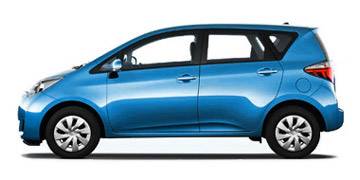
Help others by writing a review

Help others by writing a review
Added: 22nd of March 2019
purchased this toyota verso in 2016 and realize what i have been missing no problems ever i service it every 6000 miles my self now it has done 90,000 miles getting 46 mpg + if i take my time eg 65 mph hope to buy another before too long, can get oil filters for around £2.00 spark plugs are £10.00 for 4 just wash the air filter dry it and put it back so no charge, car to myself is great do not want to get anything else .....
Added: 12th of October 2016
Fuel consumption is terrible in all conditions
Added: 25th of January 2015
Very comfortable driving seat ..would be nice if passenger seat could be raised to same level as drivers ... Auto ride smooth and fuel efficient engine make it a pleasure to drive.
Added: 15th of November 2013
Purchased as it provides availability for seven people, it has satisfactorily served that need when necessary. The car has performed well both for local trips and long distance travel. There could be more room for the back five seats when carrying seven people. So far it has been very reliable with no problems in starting whatever the weather.
Added: 15th of November 2013
I chose this car because of the space for 3 adults in the back, because there is no "bump" in front of the middle seat. also because it can convert into a 7 seater if necessary.It does the job. I've no complaints. It's not very exciting but it gets you there. I get about low - mid 30's MPG running around town doing short journeys and 40+ on longer journeys.
Added: 13th of October 2013
We got this car after looking at a lot of brochures and cars, to suit our particular needs. My wife has Rheumatoid Arthritis, so the high driving position and automatic transmission have suited us very well. On hearing that this model would be discontinued we were disappointed but consider it will probably last until we are likely to be giving up driving anyway, so don't intend to replace it for now. For anyone in our circumstances it is in many ways ideal, and the versatility given by the possibility of stowing the back seats and so getting extra carrying capacity has at times proved very valuable.
Added: 12th of October 2013
Best all round car I have owned
Added: 11th of October 2013
My 2 litre Toyota was a replacement for a 2.3 litre 2008 version of the same car. Overall I am very happy with the car although by the loss of .3 litres of engine size I have found the car much more sluggish. I appreciate this has cut down on emissions and made my road tax cheaper but on occasions it can be a little frustrating. I enjoy driving the car which is great for long journeys with loads of space for passengers and luggage. I have bought a set of Winter tyres which do make driving in wintry conditions a more pleasurable and safe experience for everyone.
Added: 11th of October 2013
It has been an excellent car, easy to drive and has delivered the performance expected.
Added: 11th of October 2013
Fuel consumption on short jourmeys is not very good, same with motorway driving. Sat Nav is quite frustrating, not very accurate with directions - takes you funny routes. Comfortable seatsa nd easy to chage from 5 seats to 7. With 5 seats - enormous luggage capacity.